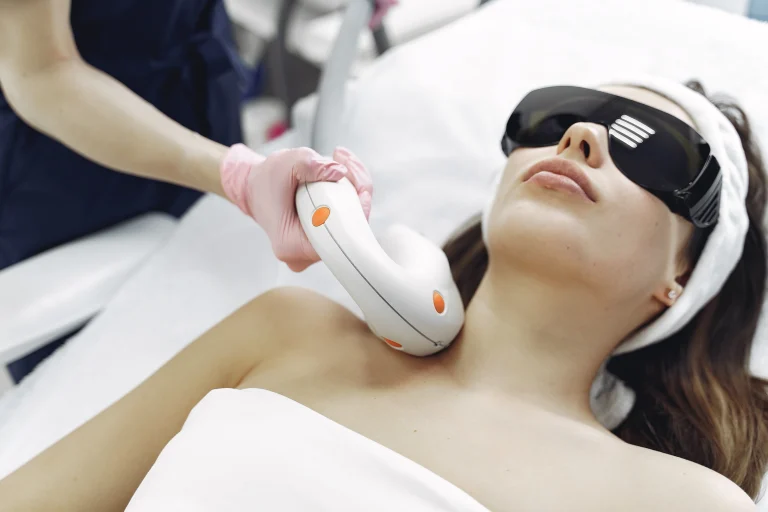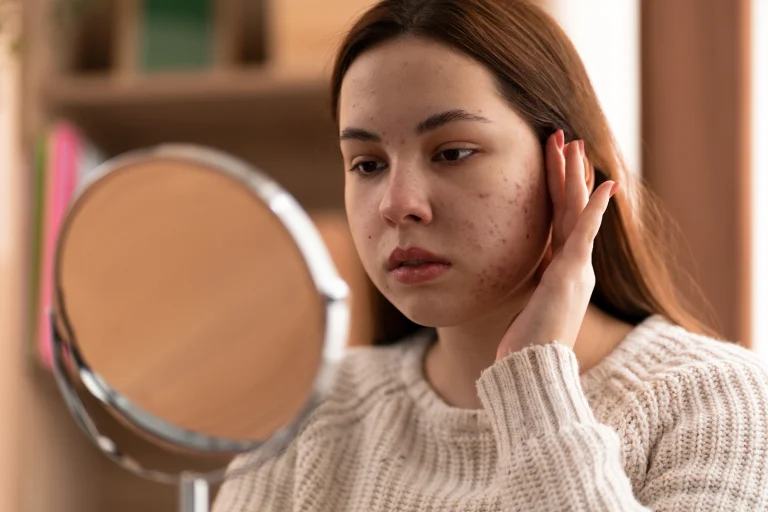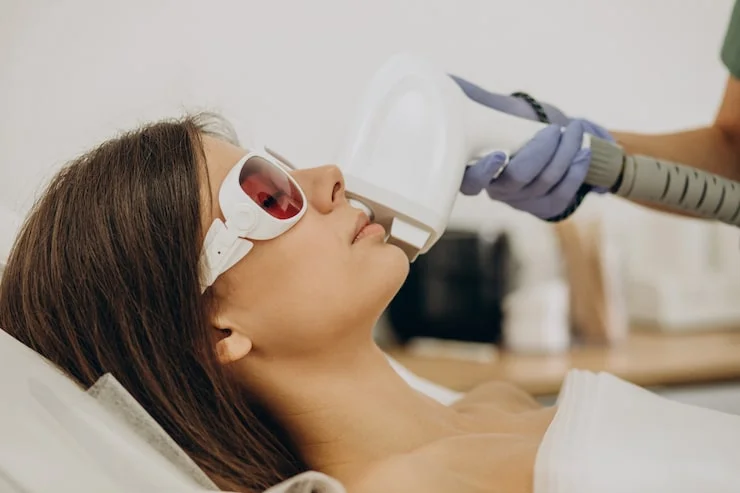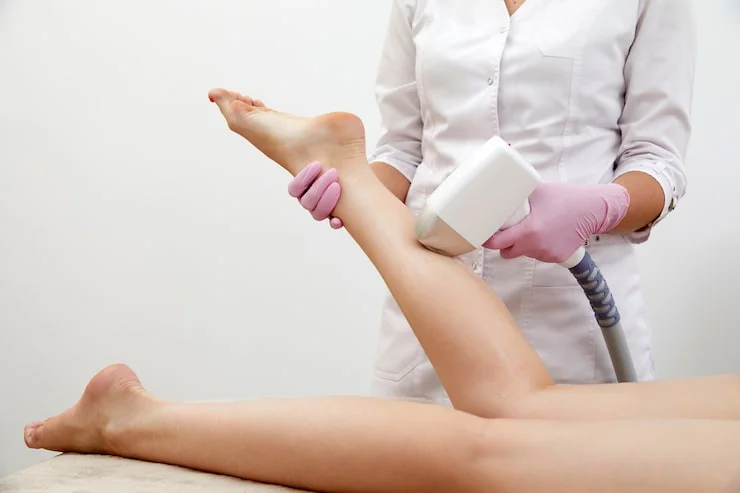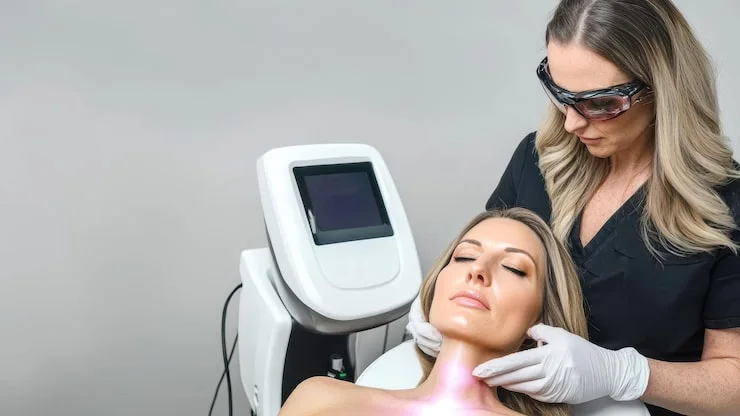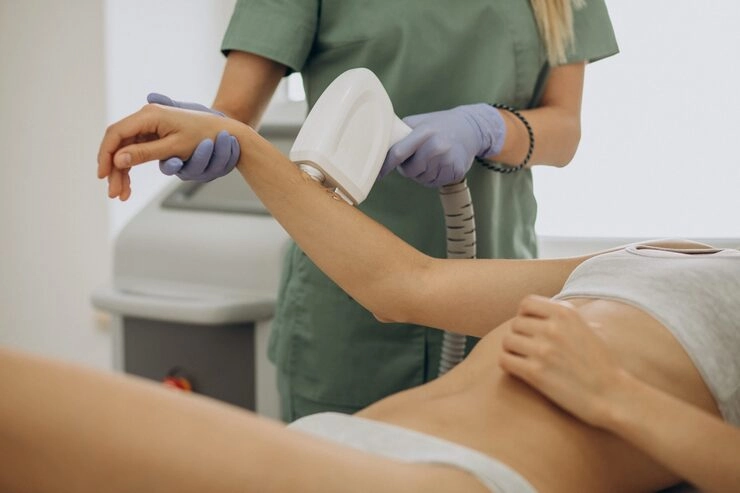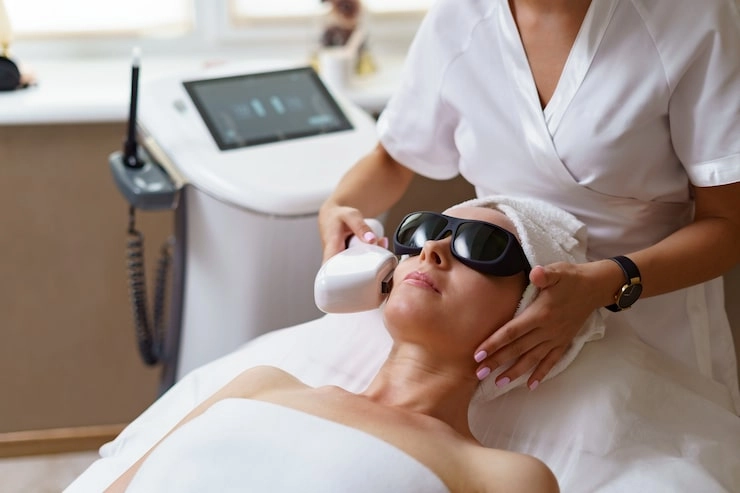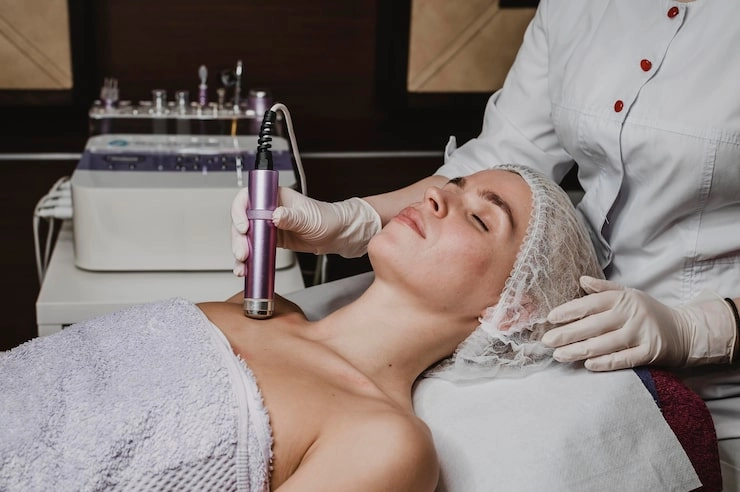
Laser skin resurfacing is a total game-changer for anyone chasing smooth, tight, and glowing skin. CO2 lasers are the stars here, using pinpoint light beams to zap both the surface and deeper layers. They’re awesome for fixing wrinkles, scars, uneven color patches, or rough patches.
Key Differences Between Fractional and Full Ablative Laser Approaches
Fractional lasers hit tiny skin spots, leaving the rest alone. Healing’s quick because of this. Full ablative lasers? They peel off the whole top layer in one go. You get bold results, but you’re stuck recovering longer.
Why Minimizing Pigmentary Risks Matters in Laser Treatments
Nobody wants dark or light spots popping up after treatment, especially folks with darker skin. Picking the right laser and tweaking its power is super important. It keeps risks low while making skin look amazing.
What Is Fractional CO2 Laser Treatment?
Fractional CO2 laser is a chill way to refresh skin. It makes tiny, controlled nicks to kickstart collagen and speed up healing.
How Fractional CO2 Lasers Work on the Skin Surface
Here’s the deal: a fractional CO2 laser splits its beam into tons of mini-rays. These hit small, dotted zones on your skin. The heat dives deep only in those spots, so the surrounding skin stays safe. That’s why you heal fast compared to full ablation.
Benefits of Fractional CO2 Laser for Skin Texture and Tone
- Fast Bounce-Back, Less Hassle. Untouched skin around the treated dots helps you heal quick. Most folks are back to normal in just a few days.
- Pinpoint Fixes, No Big Drama. As your skin patches itself up, it churns out collagen. This makes your skin look fresher and younger over time.
- Less Worry About Color Shifts. The fractional trick cuts down heat damage nearby, so you’re less likely to get weird pigmentation changes.
Ideal Use Cases for Fractional CO2 Lasers
Fractional CO2 lasers rock for mild wrinkles, acne scars, big pores, sun damage, or uneven tone. They’re perfect for smoothing scars, wiping out dark spots, easing wrinkles, or giving skin a fresh glow.
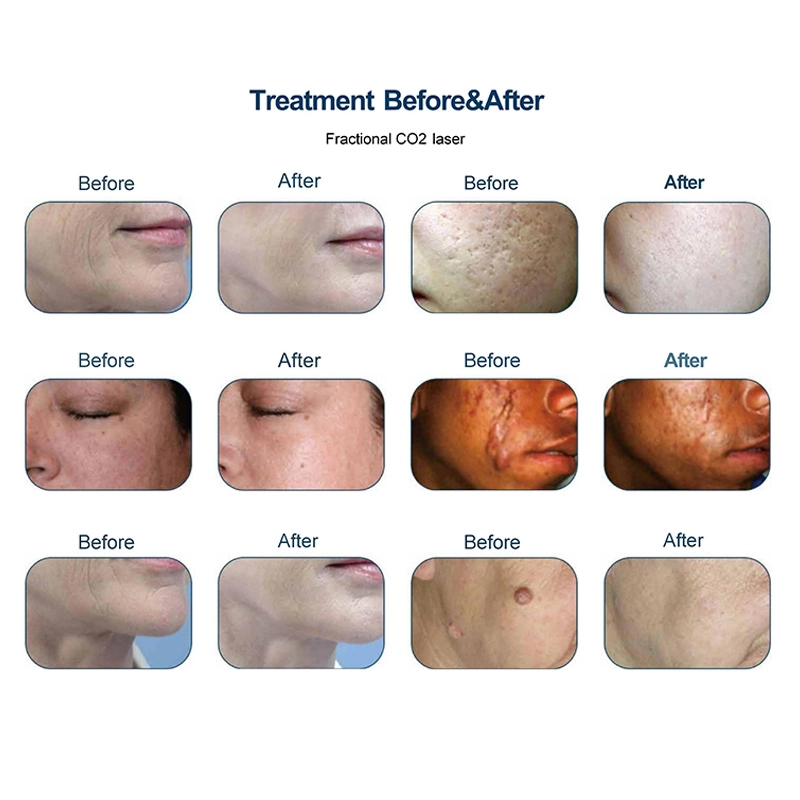
What Is Full Ablative Laser Resurfacing?
Full ablative laser resurfacing strips away the whole top skin layer in the treated area. This sparks new growth from deeper down.
How Full Ablative Lasers Treat the Entire Skin Surface
Unlike fractional lasers, which skip spots, full ablative lasers clear every bit of surface skin in one sweep. It’s intense, so it remodels skin big-time but takes longer to heal.
Advantages of Full Ablative Treatments for Deeper Concerns
- Huge Change in One Shot. Full ablation often nails it in just one session for worn-out or damaged skin.
- Tackles Deep Issues. Got bad wrinkles or deep scars? This method handles what lighter treatments can’t.
- Collagen Keeps Going. By blasting the surface and heating deeper layers, collagen rebuilds for months after you’re healed.
Considerations Before Choosing Full Ablative Lasers
Hold up—full ablation means a week or two of downtime. Plus, there’s a bigger chance of infections or color changes. Your skin type (think Fitzpatrick scale) matters a ton before jumping in.
Comparing Fractional vs. Full Ablative Lasers
Each laser has its own vibe, depending on what you need and what your doc’s aiming for.
Treatment Depth and Precision Differences
Full ablation digs deeper, piling up heat fast. It’s great for big fixes but needs a pro to control it. Fractional lasers let you tweak the depth. They’re safer for tricky spots, like near your eyes or mouth.
Recovery Time and Aftercare Requirements
Fractional treatments? You’re usually good in under a week. Full ablation, though, might keep you sidelined for two weeks. You’ll need to baby your skin with wound care and dodge the sun like it’s the plague.
Suitability Based on Skin Type and Goals
Fractional lasers are cool for all skin types since they don’t blast too much heat at once. Full ablative is better for lighter skin or folks okay with a long recovery for jaw-dropping results.
Managing Pigmentary Risks in Laser Treatments
Smart moves and skilled hands can keep pigment issues at bay.
Factors That Influence Pigmentation Changes Post-Treatment
- Skin Tone and Heat. Darker skin (Fitzpatrick IV-VI) can get extra pigmentation from heat stirring up melanin. It’s a real thing to watch for.
- Before and After Care. Slather on sunscreen before treatment to calm inflammation. Afterward, keep up with moisturizers and strong sunscreen to avoid trouble while healing.
Techniques to Reduce Pigmentary Side Effects
- Smart Energy Choices. Ultra-pulse CO2 lasers crank up power but cut pulse time. This keeps nearby tissues safe, perfect for sensitive spots while dodging pigment issues.
- Easy Does It. Instead of one heavy session (say, over 40% coverage, which can heat things up too much), pros often go for lighter fractional passes (5–20%) spread out. It’s less risky.
Selecting the Right Option Based on Your Needs
Picking fractional or full ablative lasers depends on what you’re after, how much time you’ve got, and the kind of results you want.
Matching Treatment Type with Skin Conditions
Got fine lines or early aging? Fractional CO2 lasers deliver solid results without much fuss. Deep wrinkles or gnarly scars? Full ablation might be your pick, but only with a pro calling the shots.
Balancing Results with Downtime Tolerance
Super busy? Fractional lasers let you bounce back fast. If you’re cool with a big recovery for a one-time, knockout transformation, full ablation’s your jam.
Consulting a Qualified Provider for Personalized Guidance
Talk to a board-certified pro. They’ll dig into your health, lifestyle, and beauty goals. Then they’ll map out the best plan—fractional, full, or a mix—to get you the best glow-up.
MQLASER: Trusted Supplier of Beauty Equipment
MQLASER makes top-notch gear for both fractional CO2 laser therapy and full ablative work, used in clinics all over the world.
Quality Features of MQLASER’s Fractional CO2 Laser Machines
Our machines pack a USA Coherent Metal Tube (RF-excited) for steady, long-lasting performance. They’ve got user-friendly touch screens with settings you can tweak, perfect for slammed clinics.
DIATERMOLOGIE® Portable CO2 Laser Machine Highlights
This little powerhouse is great for mobile setups. It’s got a fractional mode and an adjustable aiming beam for spot-on precision—awesome for face refreshes or intimate wellness treatments.
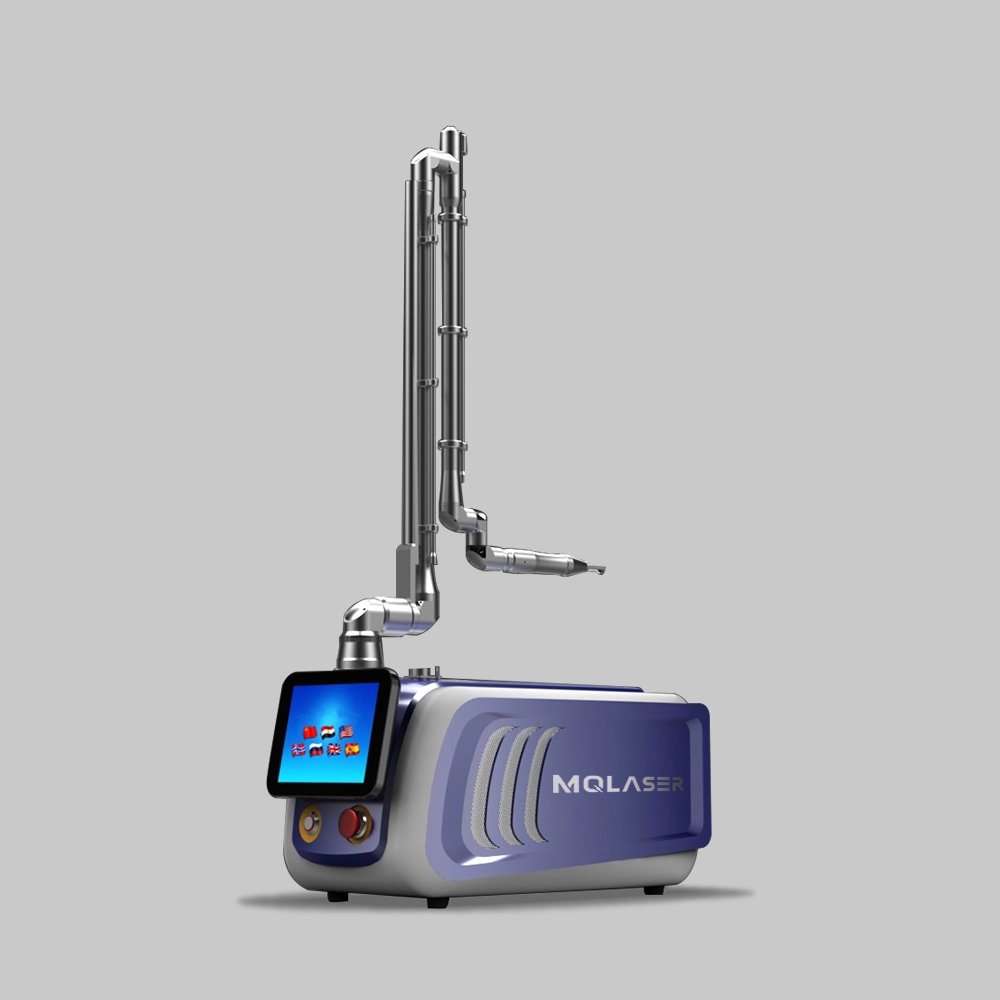
DEPPLUS Stationary CO2 Laser System Capabilities
This bad boy has a 7-joint arm that spins 360°, ultra-pulse modes, and scan shapes like squares or ellipses. It’s super flexible for stuff like scar fixes or wrinkle smoothing.
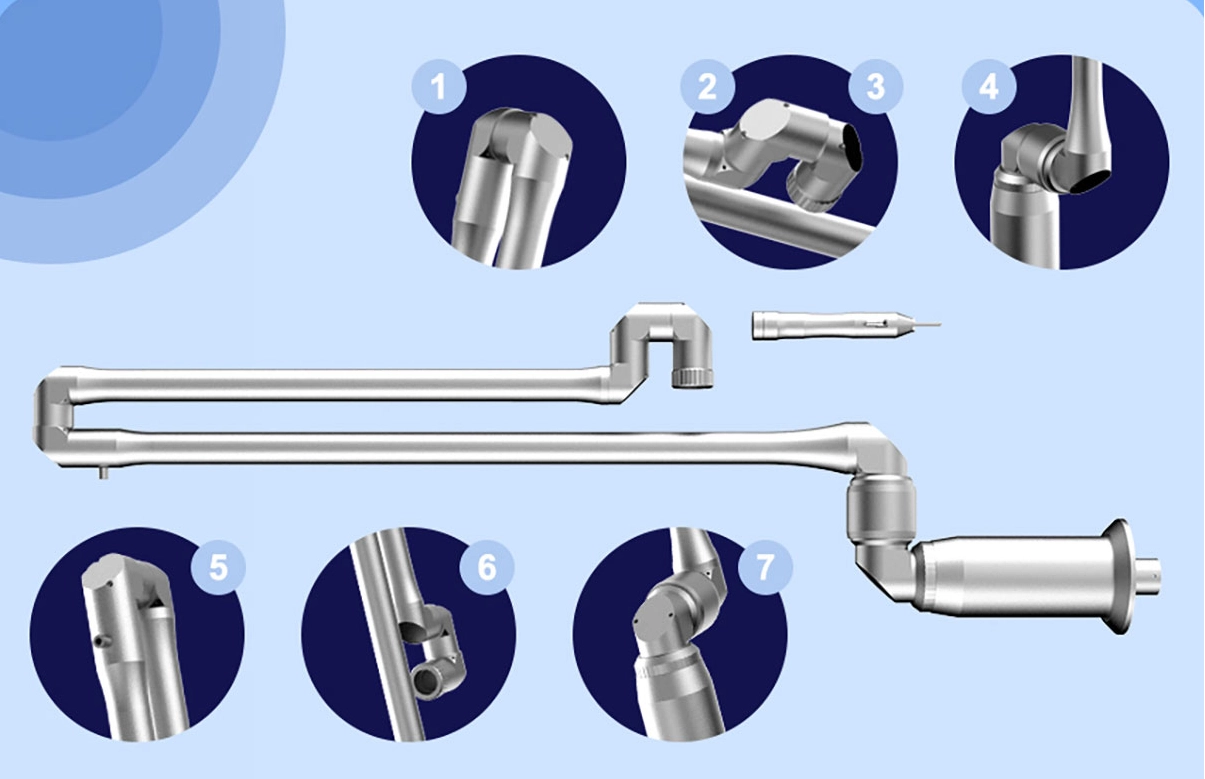
Why Professionals Choose MQLASER for Reliable Technology
With CE, FDA, and ISO13485 certifications, plus training videos and remote help, MQLASER is a favorite for aesthetic pros worldwide who want gear they can count on.
FAQs
Q1: What’s better—fractional or full ablative CO2 laser?
A: Depends on your vibe. Want quick recovery and steady skin upgrades? Go fractional. Got deep wrinkles or scars and can deal with downtime? Full ablative’s your move, with a pro’s guidance.
Q2: Can darker skin tones safely do CO2 laser treatments?
A: Yup, but it’s gotta be done right. Fractional lasers with low settings are safer since they cut down on heat that can mess with pigmentation. Find a doc who’s experienced with all skin types.
Q3: How many fractional CO2 laser sessions do I need?
A: Most folks see sweet results after 1–3 sessions, spaced 4–6 weeks apart. Depends on stuff like acne scars or fine lines. A touch-up every 6–12 months keeps your skin on point.

